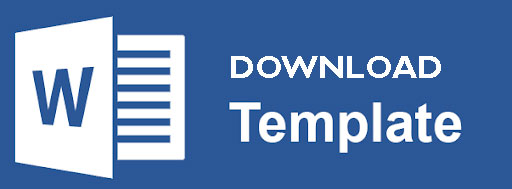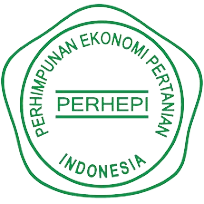Author Guidelines
Jurnal Manajemen Agribisnis dan Agroindustri is a peer-reviewed journal published twice a year, in June and December. Each issue contains a minimum of seven (7) articles. The articles must be original research in the field of Agribusiness and agroindustry management that have not been previously published in any other journal. Since Vol. 3 - 2023, all manuscripts must be written in English.
To be successful in the submission process, please refer to the following points:
- Read the Focus & Scope for an overview and assess whether your manuscript is suitable for this journal.
- Ensure that issues of publication ethics, copyright, authorship, image formats, data formats and references are clearly understood.
- Make sure all authors have approved the contents of the submitted manuscript.
- Review our updated policies on Publication Ethics and AI Usage Policy, as adherence is mandatory.
Manuscript Preparation
Manuscript file
All manuscript files should be prepared in an editable file using an appropriate word processing package and saved as .docx or .rtf, pay attention : manuscript files with a PDF (.pdf) extension are not acceptable file types. The manuscript is written in A4 paper using Times New Roman font, size 12, one single space.
Use a journal template
Jurnal Manajemen Agribisnis dan Agroindustri has provided a journal template and a guide using the template below. As for the templates that have available writing styles / designs, we recommend using versions of Microsoft Word 2010 and above to ensure that the design / writing styles work well
Download TemplateManuscript Languages
Jurnal Manajemen Agribisnis dan Agroindustri accepts manuscripts written in English (Since Vol. 3 - 2023). Authors are expected to ensure that the use of vocabulary, phrasing, and sentence structure adheres to the standard conventions of American English grammar.
Article Structure
Based on JMAA journal template article structure must be sequential and contain according to the following conditions:
Title
The title should be short, clear, and explain the contents of the research paper in an informative way. Avoid writing non-standard abbreviations and terms in the title.
Author(s)
the name of each author is written in full (not accompanied by an academic degree), the address of the institution where the research was carried out is written with the name of the department / division followed by the name of the university / institution. If there is more than one affiliation, then use the numbering as a superscript (avoid the asterisks). Use the asterisk superscript for the author as the corresponding author. Please note that, as per our ethics policy, AI tools cannot be listed as an author.
Abstract
Abstract contains briefly the research background, research objectives, methods, significant research results, and conclusions. Avoid using abbreviations, diagrams and references. 250 words maximum
Keywords
The keywords can be taken from the title, it contains 3-5 keywords which can be any word / phrase. Keywords are sorted alphabetically and separated by comma (,).
1. Introduction
The introduction contains the background or subject matter and research objectives which are supported by the results of the latest research as a reference. Primary references such as journals, proceedings, theses, or dissertations are preferred, written not more than 1000 words.
2. Method
Contains an explanation of the experimental design and the research parameters used. The method is written briefly (no more than 600 words) but is sufficiently detailed to allow the method to be repeated or used by other researchers. The research procedure is written in detail by referring to the original procedure or published modification. Methods and specifications of equipment / materials used such as chemicals, microbial strains, plant species, mutants, etc. are written in full. For each method, it is written without using a sub-section (sub heading). The use of units of measure follows the writing of the international system.
3. Discussion
Describe the research results and the interpretation of the results in relation to existing references. The reference used is the primary reference with more than 80% priority. Research results can be presented in text, images, or active tables that can be edited by the editor. The numbering of figures and tables is adjusted according to the order of the quotes in the text.
4. Conclusion
Is the answer to the research objectives and a summary of the research findings. Conclusions are presented in a short and clear measure (with supporting data) based on the results and discussion.
5. Acknowledgements (Optional)
The authors express their gratitude to various parties who have assisted in writing, such as research sponsors and resource persons. Acknowledgments are optional, can be written or not.
6. References
Preferably using new reference sources for at least the last 5 years, and 80% come from primary references. References are written in numerical order, following the IEEE style format. It is advisable to use a reference manager application and add a DOI link or pdf link. Download the complete guide on how to write references using IEEE Style
Publication Stages
1. Submitted Stage
Authors are required to submit their manuscripts online after creating an account on this website. Once a submission is completed, a notification will be promptly sent to the editorial board. Therefore, authors are advised to carefully ensure the following before submitting:
- The manuscripts that will be sent are in accordance with the provisions of this journal
- Complete the submission metadata on the form provided on the website
- If there are problems during the delivery process, please contact our support office
2. Pra-Review Stage
In this second stage, the manuscript submitted by the author will be processed by the editor, as for the pre-review conditions as follows:
- Editors who process the manuscripts are selected by the editorial board based on the suitability of the editorial scientific field with the script being processed
- The time required for processing is at least 2 week after the manuscript is received by the editorial board
- Some that are reviewed by the editor at this stage are:
- Does the manuscript match the focus & scope of this journal? If not, the submission will be rejected immediately
- Does the manuscript match this journal template? If not, the submission will be returned for revision by the author
- Has the manuscript passed the plagiarism and AI-generated content check in accordance with the provisions in this journal? Submissions with a similarity index above 25% or with undisclosed AI-generated content will be returned for revision.
- The deadline for revision at this stage is a maximum of 2 weeks, and will be rejected if it exceeds the deadline
- The editor will continue to the next stage if the above criteria have passed
3. Reviewing Stage
The quality of the publication is determined at this stage, the editor will send a request to the reviewer to review the manuscript, as for the following conditions:
- Reviewers are selected by editors based on the suitability of the scientific field, at least 2 reviewers
- Reviewers are given a deadline of 2 weeks to respond to editor requests and 4 weeks to complete the review of manuscript
- The editor together with the reviewers will review the manuscript using the single blind review method
- Some that were reviewed by peer groups at this stage are presented in full in the peer-review policy
- After the review process is complete, the editor will make a decision on the manuscript based on the recommendations from the reviewers
- If a minor revision is required: The manuscript will be returned to the author for revision with a deadline of 2 weeks, then the editor will proceed to the next stage after the manuscript is revised
- If a major revision is required: The manuscript will be returned to the author for revision with a deadline of 2 weeks, then the peer groups will review it again in the second round (back to point 3.b)
- The editor will take a decision to accepted if the above criteria have been exceeded, A notification that the article is accepted and can be published is sent along with the author's fee bill
- After the fees are paid, the editor will proceed to the next stage
4. Editing Stage
The work at this stage is mostly done by the editor. In general, at this stage the author(s) is just waiting for the article publishing schedule, a communication between author(s) and editor if needed. This work at least takes 2 weeks
- Copyediting
The editor will check each manuscript and edit it if necessary, any changes made by the editor to the manuscript will be notified to the author(s) to approve the changes. Checks that will be carried out is:
- The words uses, sentences and grammar of the manuscript
- Typing errors, and ensuring all information contained in figures, tables and graphs is clear
- Reference style, and ensuring all DOI or URL listed on the reference is searchable
- Plagiarism and AI content check is carried out in the next process, pay attention to the plagiarism policy
- Editing Layout
The editor will convert the manuscript to a PDF format file according to this journal layout template, provides page numbering, DOI, Copyright, license information, etc.
- Scheduling Publication
As an author, it is important to plan wisely and consider the time required for the publication process in this journal. Manuscripts that have successfully passed all stages of review and editing will be scheduled for publication without delay. To provide a better understanding, the following is an illustration of how the editorial team schedules publications:
- Each issue is published in the last week of the scheduled month (June & December) and contains 30 acticles
- The list of articles to be published in the issue at least has passed the publication stage a maximum of 1 week before the issue's publication schedule
- When the current issue publication schedule and 30 articles have been filled, the articles that have passed the publication stage will be scheduled for the next issue publication schedule.
5. Indexing Stage
Jurnal Manajemen Agribisnis dan Agroindustri is a journal with an open access policy, all articles published immediately can be read and downloaded for free to the public, therefore to increase the dissemination and visibility of publications once the article is published it will be indexed automatically, see our indexer list. Based on copyright and license policies, authors can redistribute publications in institutional repositories / social media / personal websites / other indexing engines provided that the Jurnal Manajemen Agribisnis dan Agroindustri is listed as the first publication.





